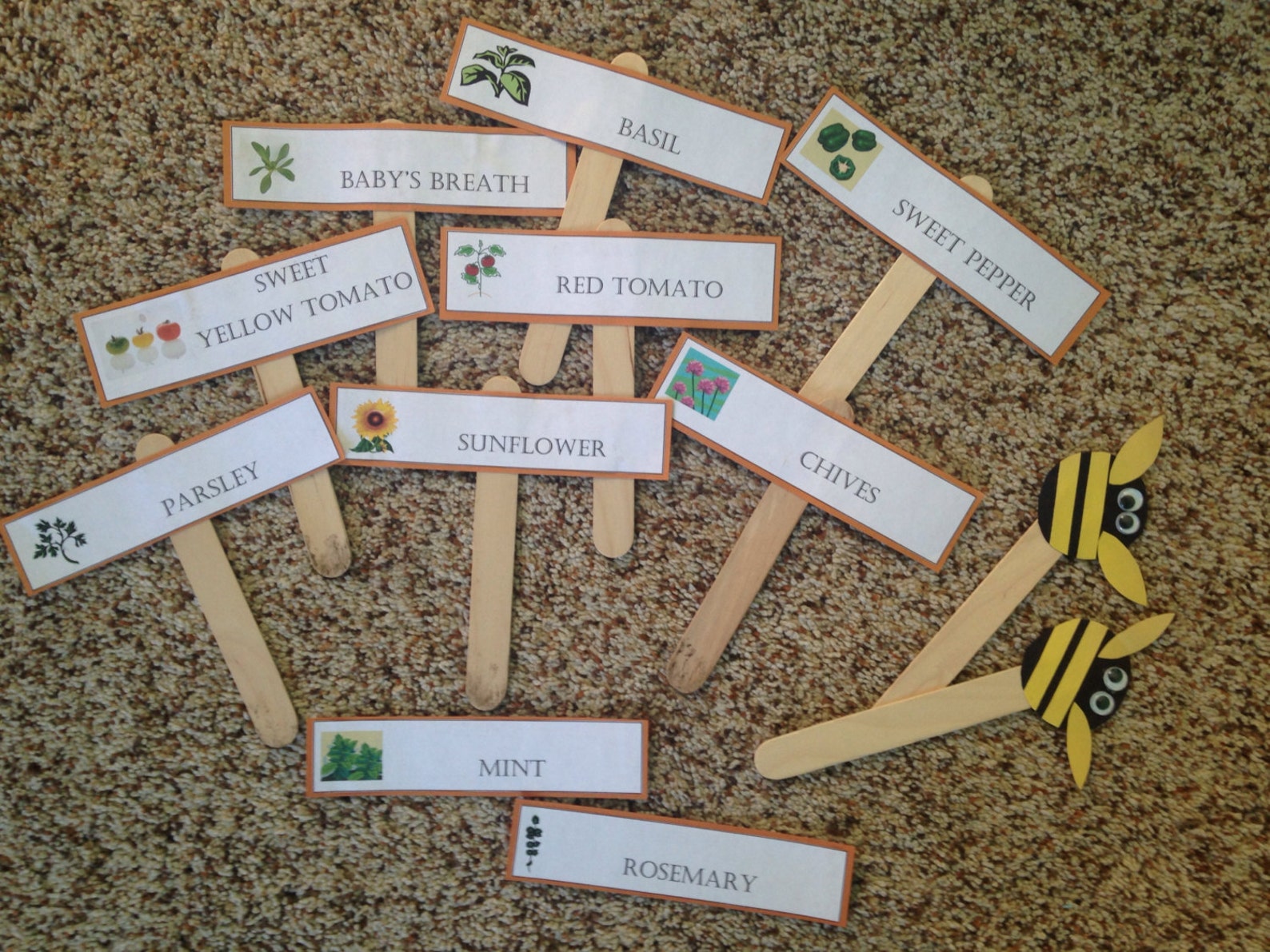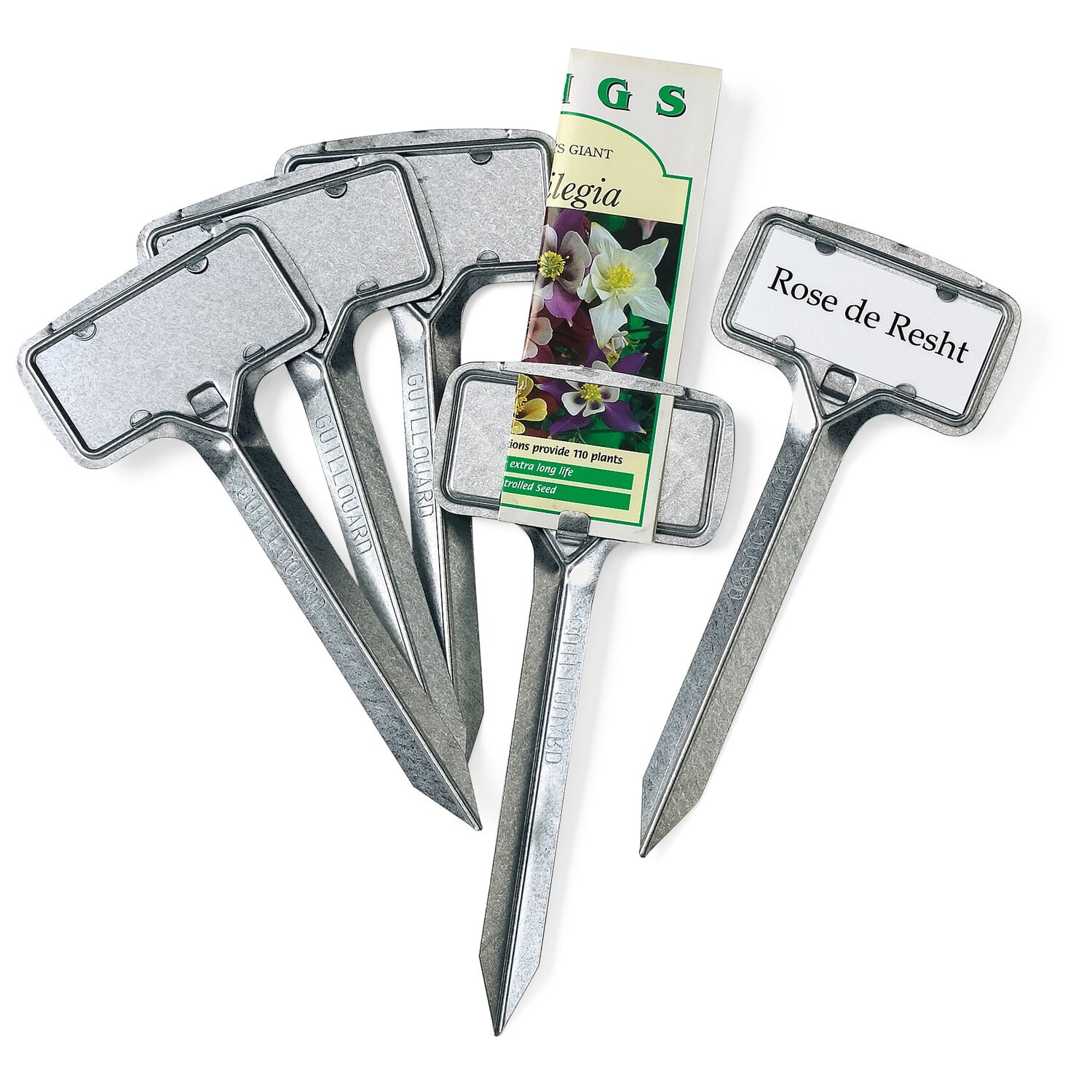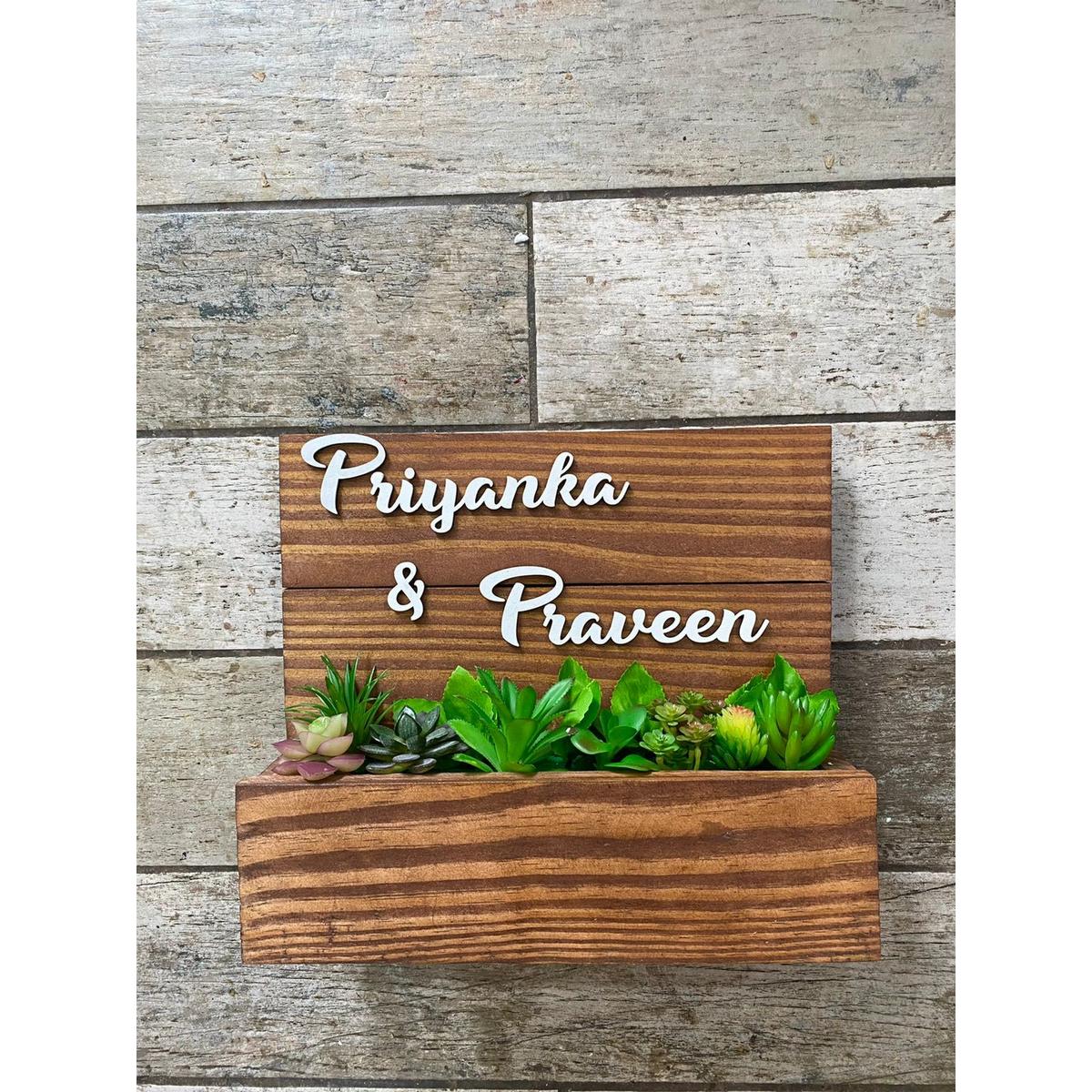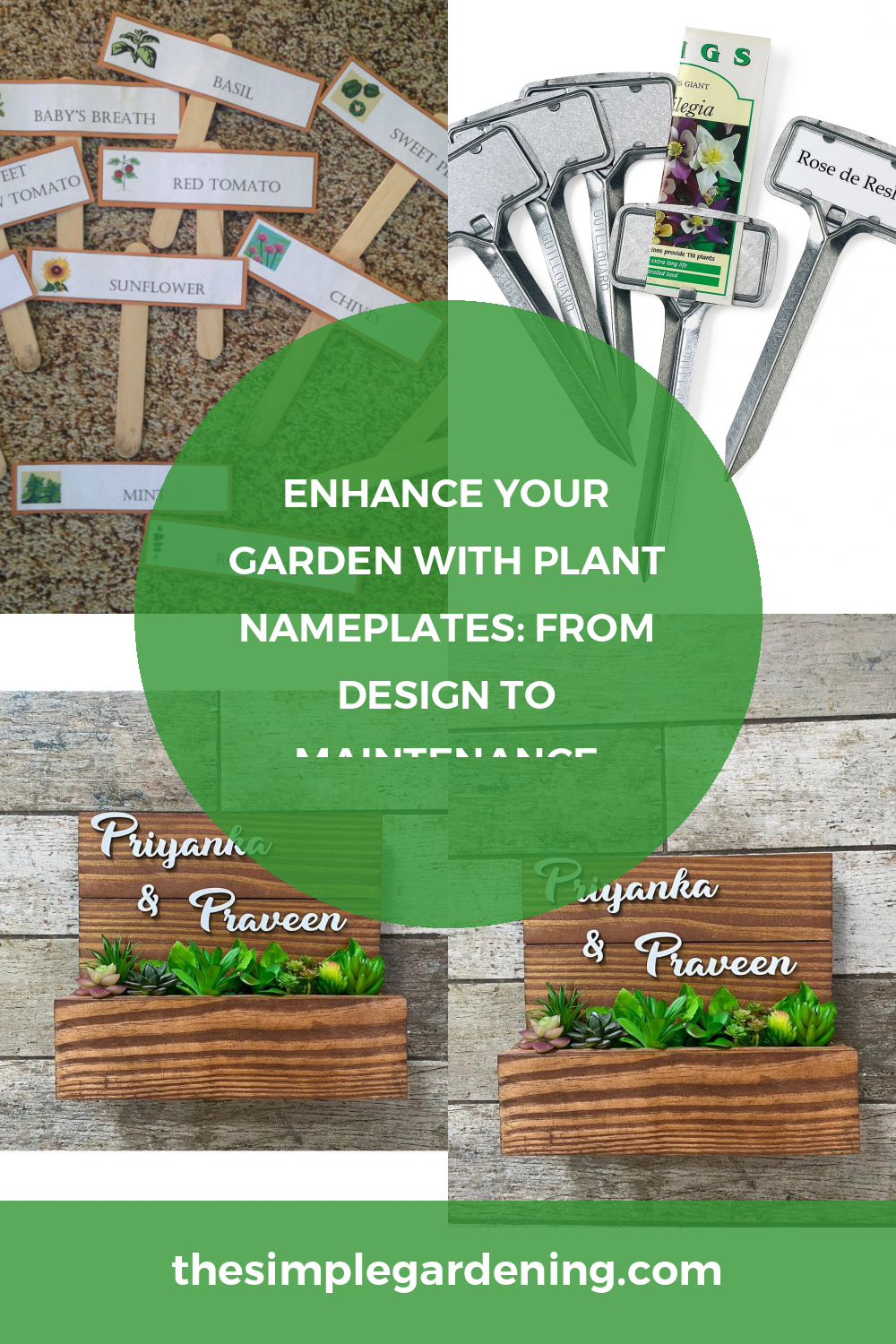Plant nameplates are essential tools for any gardener, providing vital information about the plants they adorn. Dating back through gardening history, these markers have evolved to become indispensable in modern gardening practices. Their primary purpose is to identify plants, but they serve a multifaceted role, aiding in organization, education, and aesthetics.
| Aspect | Details |
|---|---|
| Definition and Purpose | Plant nameplates, also known as plant labels or markers, are small tags or signs placed near plants to display key information. They help identify plants, provide care instructions, and contribute to the overall organization and aesthetics of a garden. |
| Historical Background | The use of plant nameplates can be traced back centuries, with early civilizations employing rudimentary markers to distinguish between plant species. Over time, these markers have evolved in design and functionality, reflecting advancements in gardening practices and materials. |
| Importance in Modern Gardening | In contemporary gardening, plant nameplates play a crucial role in facilitating plant identification, especially in large or diverse gardens. They also aid in educational initiatives, enhance the visitor experience in public parks and botanical gardens, and contribute to the overall beauty and organization of garden spaces. |
2. Types of Plant Nameplates
Plant nameplates come in various forms, each with its unique characteristics and purposes. Understanding the different types available is essential for choosing the most suitable option for your garden.
| Type | Description |
|---|---|
| Temporary vs. Permanent Nameplates | Nameplates can be categorized as temporary or permanent based on their longevity. Temporary markers are often made from materials like paper or cardboard and are ideal for short-term labeling, such as in seedling trays. Permanent nameplates, on the other hand, are crafted from durable materials like metal or plastic and are designed to withstand outdoor conditions for years. |
| Materials Used | Nameplates are crafted from a variety of materials, each with its advantages and disadvantages. Common materials include wood, metal, plastic, and ceramic. The choice of material depends on factors such as durability, aesthetics, and budget. |
| Commercial vs. DIY Nameplates | Plant nameplates are available for purchase commercially, offering convenience and professional quality. Alternatively, gardeners can opt for DIY nameplates, allowing for customization and creative expression. DIY options range from simple handmade tags to elaborate engraved designs. |
3. Designing Plant Nameplates
Designing plant nameplates involves careful consideration of both functional and aesthetic elements to create markers that are informative and visually appealing.
| Aspect | Details |
|---|---|
| Essential Information to Include | When designing a plant nameplate, it’s essential to include key information such as the botanical name, common name, and care instructions. This information helps gardeners and visitors identify and care for the plants accurately. |
| Aesthetic Considerations | In addition to conveying information, plant nameplates contribute to the visual appeal of a garden. Factors such as color, font, and shape should be chosen thoughtfully to complement the overall design aesthetic. |
| Customization Options | Plant nameplates offer a range of customization options, allowing gardeners to personalize their markers to suit their preferences. Engraving, printing, and handwritten designs are popular choices, offering flexibility in design and style. |
4. Materials for Plant Nameplates
The choice of material for plant nameplates significantly impacts their durability, appearance, and suitability for different environments.
| Material | Advantages | Disadvantages |
|---|---|---|
| Wood | – Natural aesthetic – Biodegradable – Suitable for DIY projects | – Susceptible to rot and decay – May warp or splinter over time – Requires maintenance to prolong lifespan |
| Metal | – Durable and long-lasting – Resistant to weather and UV exposure – Professional appearance | – May be more expensive than other materials – Limited customization options |
| Plastic | – Lightweight and versatile – Weather-resistant – Easily customizable | – Not as environmentally friendly as other materials – Prone to fading and discoloration over time |
| Ceramic | – Elegant and decorative – Weather-resistant – Ideal for decorative gardens and indoor plants | – Fragile and prone to breakage – Limited customization options – Higher cost compared to other materials |
| Sustainability Considerations | When selecting materials for plant nameplates, it’s essential to consider their environmental impact. Opting for sustainable materials, such as FSC-certified wood or recycled plastic, can minimize the ecological footprint of your garden. |

Source Image: www.etsy.com
5. Manufacturing Process of Plant Nameplates
Plant nameplates can be manufactured using various techniques, ranging from traditional craftsmanship to modern technology.
| Technique | Description |
|---|---|
| Mass Production | Mass production techniques, such as injection molding or die-cutting, are used to produce large quantities of standardized nameplates efficiently. This approach is commonly employed for commercial nameplate manufacturing. |
| Custom Handmade Methods | Custom handmade methods involve artisanal craftsmanship to create unique and personalized nameplates. Techniques such as hand-painting, carving, or calligraphy allow for intricate designs and customization options. |
| Innovative Technologies | Innovative technologies, including 3D printing and laser cutting, have revolutionized the manufacturing process of plant nameplates. These technologies enable precise customization and intricate designs, making them popular choices for bespoke and high-end markers. |
6. DIY Plant Nameplates
Creating DIY plant nameplates offers gardeners the opportunity for creative expression while providing functional markers for their plants.
| Aspect | Details |
|---|---|
| Tools and Materials Needed | DIY plant nameplates require basic tools and materials readily available in most households or craft stores. Common supplies include wooden stakes or tags, paint or markers, and waterproof sealants for outdoor use. |
| Step-by-Step Guides | Step-by-step guides provide instructions for creating DIY plant nameplates using various techniques and materials. Whether hand-painting, engraving, or printing, these guides offer detailed tutorials to inspire creativity and ensure successful results. |
| Creative Ideas and Inspirations | DIY plant nameplates offer endless possibilities for customization and creativity. From whimsical hand-drawn designs to elegant engraved markers, gardeners can explore a range of ideas and inspirations to enhance their garden aesthetic. |
7. Installation and Placement
Proper installation and placement of plant nameplates are crucial for ensuring their effectiveness and visibility in the garden.
| Aspect | Details |
|---|---|
| Best Practices for Placement | When placing nameplates in the garden, consider factors such as plant height, sunlight exposure, and visibility from various angles. Position markers near the base of plants or at eye level for easy identification. |
| Securing Nameplates | Secure nameplates using suitable methods such as stakes, adhesives, or hanging mechanisms, depending on the type of marker and the surface it’s placed on. Ensure that nameplates are firmly anchored to withstand wind and weather conditions. |
| Positioning for Optimal Visibility | Position nameplates strategically to maximize their visibility and accessibility to gardeners and visitors. Avoid placing markers in areas prone to obstruction or overshadowing by foliage. Instead, place them in open areas where they can be easily seen without obstruction, ensuring that important information remains accessible at all times. |

Source Image: www.manufactum.com
8. Maintenance of Plant Nameplates
Regular maintenance of plant nameplates is essential to preserve their functionality and appearance over time, especially in outdoor environments where they are exposed to the elements.
| Aspect | Details |
|---|---|
| Cleaning and Upkeep | Clean nameplates regularly to remove dirt, debris, and algae buildup, which can obscure text and diminish visibility. Use mild soap and water or specialized cleaners suitable for the material of the nameplate. |
| Weatherproofing Techniques | Apply weatherproof sealants or coatings to protect nameplates from moisture, UV exposure, and temperature fluctuations. This helps prevent fading, warping, and deterioration, prolonging the lifespan of the markers. |
| Periodic Information Updating | Periodically review and update the information displayed on nameplates to ensure accuracy, especially for seasonal plants or those undergoing changes in care requirements. Replace damaged or illegible markers promptly to maintain clarity and functionality. |
9. Role in Botanical Gardens and Public Parks
Plant nameplates play a significant role in botanical gardens and public parks, contributing to both educational initiatives and the overall visitor experience.
| Aspect | Details |
|---|---|
| Educational Benefits | In botanical gardens, nameplates serve as educational tools, providing valuable information about plant species, habitats, and conservation efforts. Visitors can learn about botanical diversity and environmental stewardship through informative signage and labels. |
| Enhancing Visitor Experience | Well-designed nameplates enhance the visitor experience by facilitating self-guided tours, enabling visitors to navigate the garden independently while learning about featured plants. Clear and informative signage fosters engagement and appreciation of botanical collections, enriching the overall visitation experience. |
| Case Studies of Effective Use | Many renowned botanical gardens employ innovative approaches to plant labeling, incorporating interactive elements such as QR codes, audio guides, or multimedia displays. Case studies showcase successful implementations of plant nameplates, highlighting best practices and creative solutions for engaging visitors. |
10. Use in Home Gardening
In home gardening settings, plant nameplates serve practical and aesthetic purposes, aiding gardeners in plant management and beautification of their outdoor spaces.
| Aspect | Details |
|---|---|
| Organizing and Labeling Home Gardens | Plant nameplates assist home gardeners in organizing and labeling their garden beds, containers, and individual plants. By clearly identifying plants and their care requirements, gardeners can maintain an orderly and well-managed garden space. |
| Enhancing Home Garden Aesthetics | Thoughtfully designed nameplates contribute to the visual appeal of home gardens, adding decorative elements while serving a functional purpose. Gardeners can choose markers that complement their garden style, whether rustic, contemporary, or whimsical, enhancing the overall aesthetic appeal. |
| Role in Plant Care and Maintenance | Plant nameplates provide essential information for plant care and maintenance, including watering schedules, sunlight requirements, and pruning instructions. By displaying care instructions directly at the plant’s location, gardeners can ensure proper care practices, promoting plant health and vitality. |

Source Image: hitchki.in
11. Use in Commercial Settings
Commercial nurseries and garden centers utilize plant nameplates as valuable tools for customer education, branding, and marketing.
| Aspect | Details |
|---|---|
| Role in Nurseries and Garden Centers | In retail settings, plant nameplates assist customers in selecting and purchasing plants by providing essential information such as species, size, and care requirements. Well-labeled displays enhance the shopping experience, empowering customers to make informed decisions about plant selection and care. |
| Impact on Sales | Clear and informative plant labeling can positively impact sales by instilling confidence in customers and promoting trust in the quality of plants offered. Effective use of nameplates communicates professionalism and attention to detail, influencing purchasing decisions and repeat business. |
| Branding and Marketing Opportunities | Plant nameplates present branding and marketing opportunities for nurseries and garden centers to promote their brand identity and values. Customized markers featuring logos, slogans, or QR codes can increase brand visibility and engagement, fostering customer loyalty and brand recognition. |
12. Regulatory and Ethical Considerations
When using plant nameplates, it’s important to adhere to regulatory standards and ethical guidelines to ensure environmental responsibility and sustainability.
| Aspect | Details |
|---|---|
| Compliance with Standards | Ensure that plant nameplates comply with local regulations and industry standards regarding materials, labeling requirements, and environmental impact. Adhering to established guidelines promotes environmental responsibility and consumer trust. |
| Ethical Sourcing | Choose materials for plant nameplates responsibly, prioritizing ethical sourcing practices and sustainable alternatives. Opt for recycled or eco-friendly materials whenever possible, and support suppliers with transparent supply chains and ethical labor practices. |
| Environmental Impact and Sustainability | Consider the environmental impact of plant nameplates throughout their lifecycle, from production to disposal. Minimize waste and pollution by choosing durable, biodegradable, or recyclable materials, and implement sustainable practices in manufacturing, distribution, and end-of-life management. |
13. Case Studies and Examples
Examining case studies and real-world examples provides insights into effective strategies and innovative approaches to plant labeling in various contexts.
| Aspect | Details |
|---|---|
| Successful Implementation | Explore case studies of successful implementation of plant nameplates in different settings, such as botanical gardens, public parks, and commercial nurseries. Analyze the design, placement, and interactive features of nameplates that enhance visitor engagement and educational outcomes. |
| Unique and Creative Examples | Discover unique and creative examples of plant labeling from around the world, showcasing innovative designs, materials, and technologies. From artistic installations to functional sculptures, these examples inspire creativity and demonstrate the potential of plant nameplates as artistic and educational tools. |
| Lessons Learned | Learn from failures and challenges encountered in plant labeling projects, identifying common pitfalls and lessons learned. Understanding the factors that contribute to success or failure can inform future projects and help avoid costly mistakes, ensuring the effective use of plant nameplates. |

Source Image: hitchki.in
14. Trends and Innovations
Stay informed about the latest trends and innovations in plant nameplates, from design aesthetics to technological advancements.
| Aspect | Details |
|---|---|
| Latest Trends in Design and Materials | Explore current trends in plant nameplate design, such as minimalist typography, botanical illustrations, or sustainable materials. Stay updated on emerging design aesthetics and material innovations that reflect evolving consumer preferences and environmental consciousness. |
| Technological Innovations | Discover technological innovations transforming the field of plant labeling, such as smart nameplates equipped with QR codes, RFID tags, or sensor technology. These innovations offer interactive features, real-time data collection, and enhanced user experiences, revolutionizing plant identification and management practices. |
| Future Directions | Anticipate future directions in plant nameplate design and technology, considering emerging trends in gardening, sustainability, and digital integration. From biodegradable materials to augmented reality applications, envision the possibilities for enhancing plant labeling in the years to come. |

Source Image: hitchki.in
In conclusion, plant nameplates are indispensable tools for gardeners, educators, and retailers alike, offering practical benefits and creative opportunities in plant identification and
enhancement. From their historical roots to modern innovations, plant nameplates have evolved to meet the diverse needs of gardening enthusiasts and professionals worldwide. By understanding the different types, materials, and design considerations, gardeners can choose nameplates that best suit their needs and preferences.
Incorporating plant nameplates into home gardens, botanical institutions, and commercial settings not only aids in plant identification but also contributes to educational initiatives, branding efforts, and environmental stewardship. Whether guiding visitors through a botanical garden, organizing a personal garden oasis, or promoting plant sales at a nursery, well-designed and strategically placed nameplates enhance the overall experience and foster a deeper connection to nature.

Source Image: www.pinterest.com
As technology continues to advance and consumer preferences evolve, the future of plant nameplates holds exciting possibilities. From smart labeling solutions to sustainable materials and interactive displays, the potential for innovation in plant identification and communication is limitless. By staying informed about emerging trends and embracing new technologies, gardeners can continue to elevate their gardening experience and inspire others to cultivate their green spaces with passion and purpose.
In summary, plant nameplates are more than just markers; they are symbols of organization, education, and creativity in the world of gardening. From their humble beginnings to their future innovations, these small but mighty labels play a significant role in enhancing our connection to plants and the natural world. So, whether you’re labeling seedlings in your backyard garden or exploring a vast botanical collection, remember the power of the humble plant nameplate to inform, inspire, and beautify our green spaces.

Source Image: www.pinterest.com

Source Image: alexishytten.blogspot.com

